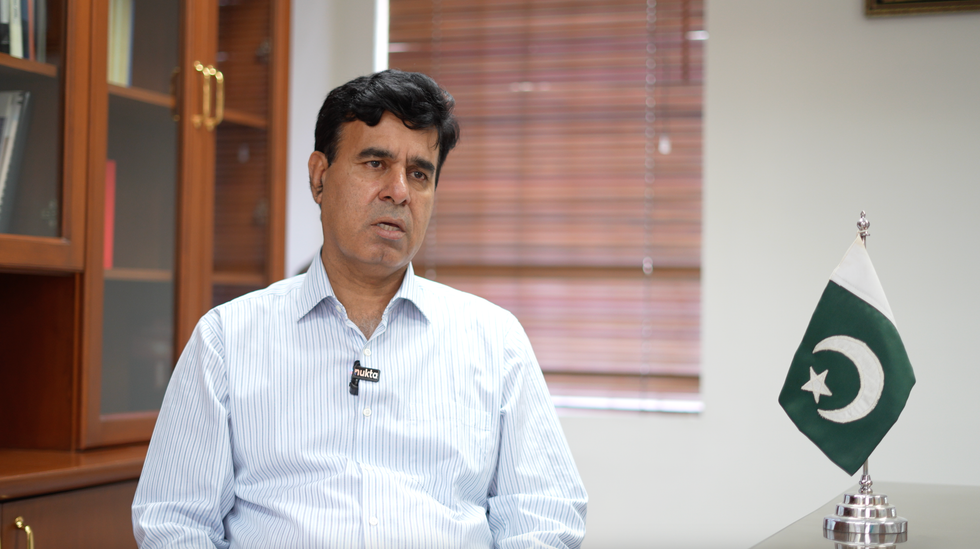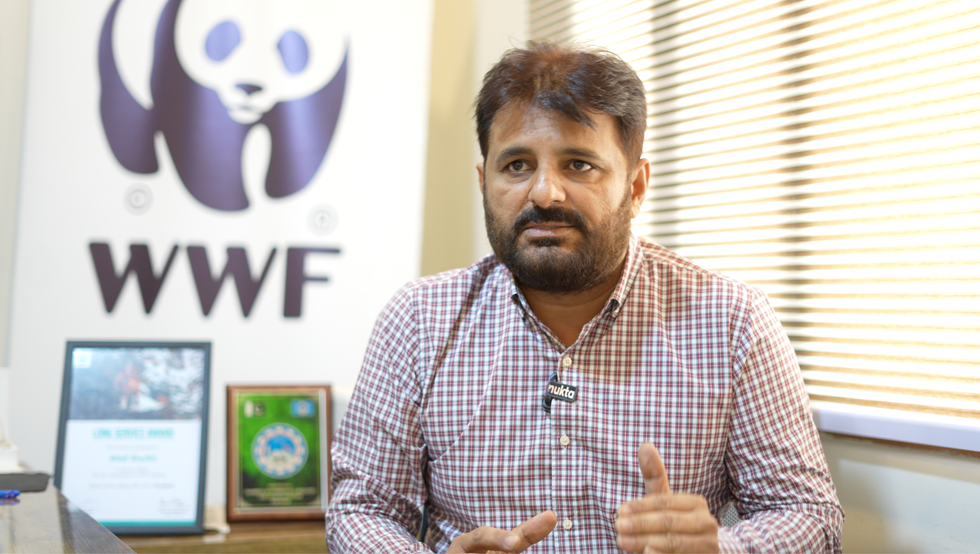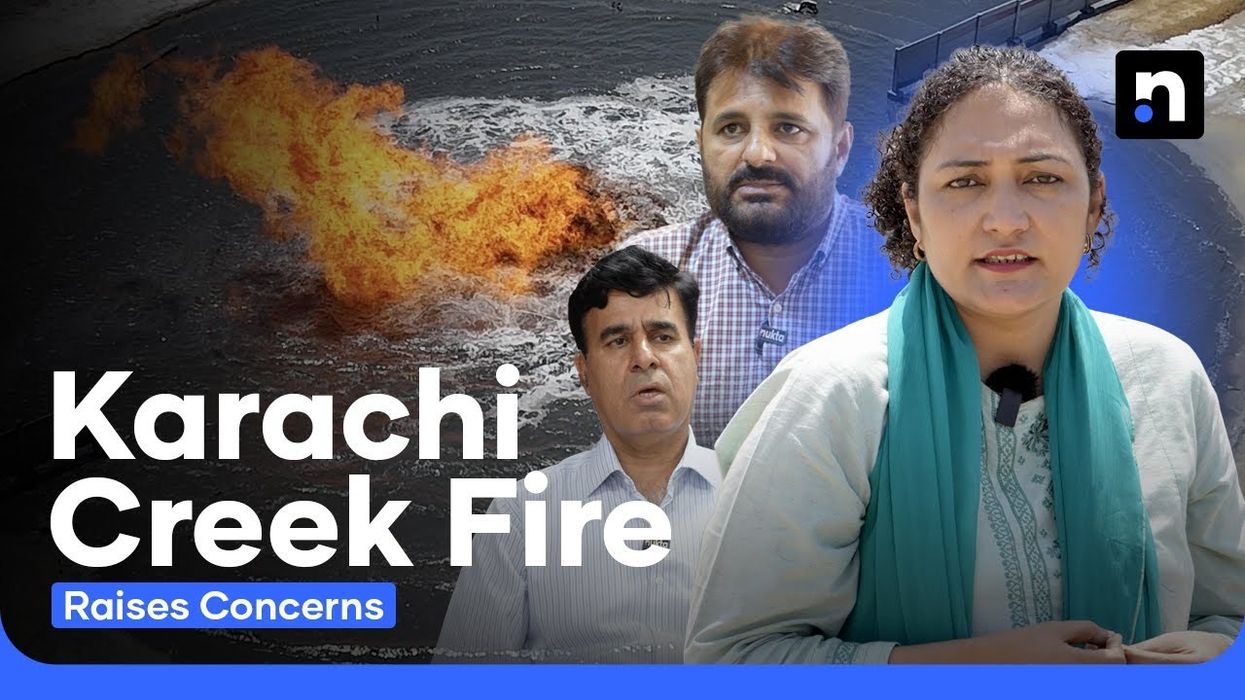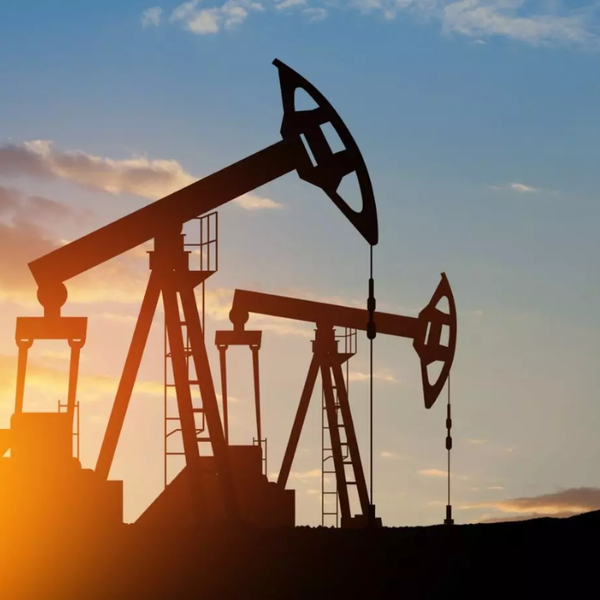Mysterious fire in Pakistan's coastal city burns for 2 weeks amid fears of toxic gas exposure
Unextinguished Korangi creek fire, toxic gas and illegal drilling spark alarm over Karachi’s vanishing coastal safeguards
Shumaila Khan
Chief Correspondent
Shumaila Khan, a multimedia journalist and Chevening SAJP fellow with 17+ years of experience, is known for her acclaimed work with BBC Urdu, BBC Indian Languages, DW English, Dainik Bhaskar, UNICEF, and Internews.
On the night of a possible Lailat-ul-Qadr—a sacred night in the Islamic calendar—a fiery blast erupted just yards from Karachi’s mangrove forests near Korangi Creek. The fire, which began on March 28 during a drilling operation, has neither been extinguished nor fully investigated weeks later, leaving behind a trail of unanswered questions, toxic fumes, and growing environmental concern.
Initial assessments suggested that the blaze was caused by methane gas released from a small underground pocket during drilling and that it would burn out naturally within 10 to 15 days. That prediction proved incorrect. As the fire continued to burn, the government finally stepped in. The Ministry of Petroleum formed a technical committee to investigate the cause and chart a path toward extinguishing the flames.
At the scene, a Karachi Metropolitan Corporation (KMC) worker shared his experience with Nukta. “I’ve been coming here every day since the fire started,” he said, thankful that the explosion happened on a Friday night when most laborers had already left the site. “That was a blessing,” he repeated, visibly shaken by the memory. He recalled that on the first day, around 60 water tankers were dispatched to douse the flames, but to no avail.
A security guard stationed at the perimeter since the first day of Eid remains alert, ensuring no one crosses the restricted zone. “When I escort the technical teams close to the site, my eyes hurt, and my hands start itching—even though I cover my face with a thick winter scarf,” he said, wiping sweat under the scorching sun. “This isn’t normal.”
While the fire itself has captured public attention, the bigger threat might lie in what’s being released into the atmosphere. The initial report—still not made public but accessed by several media outlets—suggests the presence of biogenic methane containing toxic compounds at dangerously high levels. Experts I’ve spoken with confirm that this could pose severe health risks.
Prof. Dr Muhammad Raza Shah, a chemist and Director at the International Center for Chemical and Biological Sciences (ICCBS), University of Karachi, referred to findings from the report: “Compounds like benzene, xylene, and tetrachloroethane have been detected. Tetrachloroethane is an industrial byproduct and may have accumulated here due to past landfill use. Its presence indicates possible contamination of both land and water.”
He warned that benzene is carcinogenic and “should not be taken lightly.” Shah emphasized the need to verify the report and trace the source to prevent future harm.

To address the crisis, a U.S. firm based in Singapore has been contacted. While two or three local companies have the capacity to help, they’re still determining the volume and type of engineered mud required—a task not as simple as it sounds. Experts clarify that ordinary mud won’t suffice; this needs to be specially formulated in laboratories through a process known as "mud engineering."
Sikandar Memon, an official of the Pakistan Petroleum Limited who is also the convener of the technical committee formed by the Ministry of Energy, told Nukta that the first phase would involve monitoring the area and deploying high-pressure pumps. “This is not just a small gas pocket,” he admitted. “Even I thought it would burn out naturally. But clearly, that’s not the case.”
When asked whether the gas discovered here could be commercially useful, Memon said assessments were underway to determine the economic feasibility. “We need proper geological and engineering data,” he explained, pointing out that if gas pipelines are to be laid down, they would require massive investment.
- YouTubewww.youtube.com
Although government officials insist that the gas isn't dangerously toxic, they admit the situation could shift rapidly. Continuous monitoring is ongoing. Public access remains restricted, yet visitors continue to arrive, drawn by curiosity, often risking their safety for videos and selfies. Officials warn that the ground is unstable and could collapse at any time, posing serious danger.
Beyond the technical challenges, the incident also raises serious concerns about unchecked development along Karachi’s coast. Mangrove forests, vital to the city’s ecological health, are rapidly being cut down to make way for luxury housing and commercial projects. The TPL Mangroves project is one prominent example.
The Deputy Commissioner of Korangi informed the Karachi Commissioner that the land where the fire erupted falls under the jurisdiction of the Korangi Cantonment Board. No No-Objection Certificate (NOC) was issued for the drilling. The project's owner has since been held responsible. Adding to the complexity, the land's ownership is currently under litigation.
Environmentalists warn that such incidents are only symptoms of a larger issue. According to a recent report by the World Wildlife Fund (WWF), mangroves in the area are being destroyed at an alarming rate.

Altaf Sheikh, Senior Manager at WWF Sindh, noted, “If this continues, Karachi’s coastal belt could become completely unsafe. Mangroves not only act as natural barriers against tsunamis but also support thousands of livelihoods.”
“With extreme weather events—like Karachi’s increasingly deadly heatwaves—becoming more frequent, the destruction of mangroves will only make our problems worse,” Sheikh added. “If we don’t act now, greater environmental disasters await.”
Underground gases like methane, naturally present in coastal wetlands, pose hidden threats that emerge when disturbed by reckless construction activity. Urban planners have long warned that building against the sea is a battle against nature—and nature always wins.
As Karachi expands, the balance between urban development and environmental protection is becoming harder—and more urgent—to maintain. The Korangi Creek fire is a fiery reminder that in the race to grow, we must not forget what we risk losing.







Comments
See what people are discussing